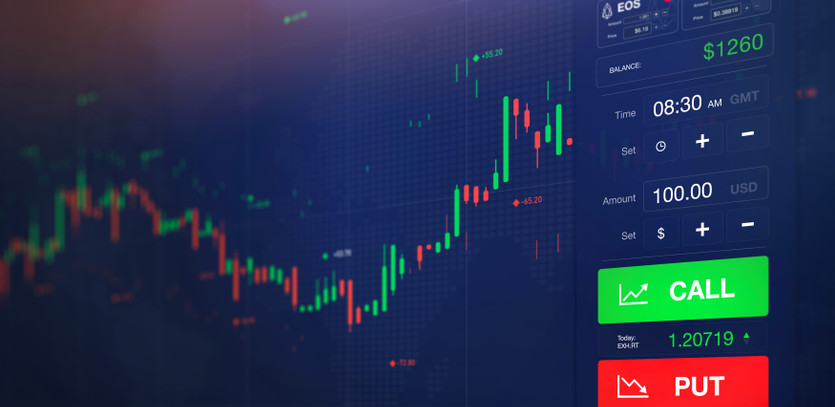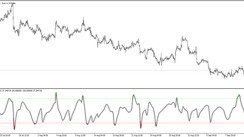With options trading, there's an opportunity for traders to profit in diverse market conditions. Regardless of the direction the market is moving, options provide an avenue for capitalizing on either market appreciation or depreciation. Whenever asset prices such as stocks, currencies, or commodities are fluctuating, there's always an options strategy to profit from the volatility.
Key Insights into Options Trading
Options contracts and the strategies involving them have predetermined profit and loss profiles that allow you to gauge your potential earnings or losses. Selling an option caps your profit at the premium collected, but it exposes you to potentially limitless downside risk. In contrast, purchasing an option could potentially yield unlimited profits while limiting your loss to the option's premium cost. Various options strategies could yield profits under diverse market conditions, from bullish to bearish or even sideways markets. However, options spreads tend to limit both potential profits and losses.
Delving into the Basics of Options Trading
If you buy a call option, you'll make a profit if the asset (for example, a stock) appreciates above the strike price before its expiry. Similarly, buying a put option can generate profit if the asset depreciates below the strike price before expiry. The precise profit you earn will depend on the gap between the stock price and the option strike price at expiration or when the option position is closed.
Conversely, a call option writer earns a profit if the underlying stock's price stays below the strike price. And a put option writer profits when the stock price stays above the strike price. An option writer's profitability is limited to the premium they collect, which is the option buyer's cost.
Deciphering Option Buying and Writing
Buying and writing options carry fundamental differences. While an option buyer holds the right to exercise the option, the option writer has an obligation to fulfill if exercised. Time decay favors the option writer and is a disadvantage for the option buyer.
An option buyer can achieve substantial returns if the trade is favorable, as a stock's price can shift significantly beyond the strike price. Hence, option buyers often have greater profit potential. On the other hand, option writers have limited profit potential, equal to the premiums they receive.
Despite the smaller potential returns, why write options? Option writers earn immediate premium revenue, can keep the entire premium if the option expires out of the money, and have the ability to trade out of liquid options.
Gauging Your Risk Tolerance in Options Trading
Understanding your risk tolerance is crucial in determining whether you are better off as an option buyer or writer. A simple exercise involves considering whether to buy or write 10 call option contracts, each priced at $0.50, with 100 shares as the underlying asset. The total cost for these contracts would be $500.
If you choose to buy the contracts, you pay $500, which represents your maximum potential loss. However, your potential profit could theoretically be limitless. On the other hand, if you write the contracts, your maximum profit is the premium income of $500, while your potential loss could be limitless. However, the odds of the options trade being profitable lean heavily in your favor.
These statistics generally apply to all options, but depending on the specific market conditions and your chosen strategy, you could shift these odds in your favor significantly.
Applying Basic Options Strategies
While there are various complex strategies involving different combinations of calls and puts, we will look at the four most basic strategies: buying a call, buying a put, writing a call, and writing a put.
Reasons to Trade Options and Selecting the Right Option
People trade options to hedge existing positions or to speculate on potential price movements of an to reduce size of message.
underlying asset. Choosing the right option to trade will depend on your analysis of market conditions, your risk tolerance, and your investment objectives.
Before buying an option, a trader needs to make an informed guess about the direction of the asset's price movement and how much it might move. Factors such as current market conditions, the asset's historical volatility, economic indicators, and company news can help make this determination.
Similarly, an options writer needs to understand the likely direction of the asset's price movement. They also need to be aware of the potential risks involved in writing an option and must be comfortable with the potential obligation they might have to fulfill if the option gets exercised.
Option Pricing Fundamentals
An option's price, also known as the option premium, is influenced by several factors:
-
Underlying Asset Price: Generally, the higher the price of the underlying asset, the higher the price of the call option. Conversely, lower asset prices tend to increase the price of put options.
-
Strike Price: For call options, the lower the strike price, the more expensive the option, as it gives the buyer the right to buy the asset at a lower price. For put options, a higher strike price makes the option more expensive, as it allows the holder to sell the asset at a higher price.
-
Expiration Date: The longer the time until an option's expiration date, the more expensive the option tends to be. This is because there is a greater probability that the underlying asset's price will move in a favorable direction.
-
Volatility: The more volatile the underlying asset, the higher the price of the option. Increased volatility means there's a higher chance of the asset's price moving past the strike price, potentially generating a profit for the option holder.
-
Interest Rates: Higher interest rates can increase the price of call options and decrease the price of put options. This is due to the cost of carry, which is the cost of holding an investment.
-
Dividends: If the underlying asset pays dividends, it can decrease the price of call options and increase the price of put options.
Understanding these factors and how they interact can help traders make more informed decisions when buying or selling options.
Unraveling the Complexity: Mastering the Art of Options Trading
Trading options might seem daunting at first, given the myriad of factors at play. But like any craft, once you familiarize yourself with the fundamental concepts, everything starts falling into place. Let's explore how you can better understand these principles and transform your options trading journey from a rocky road into a thrilling adventure.
Getting to Grips with Options Basics
Just like learning a new language, understanding options requires you to be fluent in its terminology. Know your Calls from Puts, Strike Prices from Expiration Dates, and understand what In-the-Money and Out-of-the-Money means. Build a strong foundation of knowledge and make sure you're comfortable with these concepts before diving into actual trading.
Risk Tolerance: Can You Sleep at Night?
Options trading can be risky, especially when you're just getting started. It's essential to take an honest assessment of your risk tolerance. Can you handle seeing your investments swing wildly in value? If the answer is no, you might want to stick to more conservative strategies, such as buying options, where your risk is limited to the premium paid.
Developing Your Trading Strategy
There's no 'one-size-fits-all' strategy when it comes to options trading. Your strategy should be tailored to your specific financial goals, risk tolerance, and market outlook. This could range from straightforward approaches, such as buying calls or puts, to more complex strategies involving multiple options, like straddles or spreads.
Keeping an Eye on Market Conditions
The price of an option is directly influenced by the price and volatility of the underlying asset. Keeping up-to-date with market conditions and news impacting the underlying asset can help you predict potential price movements. Is the market bullish, bearish, or neutral? Use this information to guide your trading decisions.
Staying Informed
Knowledge is power in options trading. Take advantage of resources available to you: follow market news, read books on options trading, take online courses, and join trading communities. The more information you have, the better decisions you can make.
Practicing with Paper Trading
Before risking real money, consider starting with paper trading – a simulation of trading that allows you to practice without actual monetary risk. It's an excellent way to test your knowledge, try out different strategies, and build confidence.
Understanding Tax Implications
Remember, any profits from options trading are subject to taxation. The tax laws around options trading can be complex, so consider consulting with a tax advisor to understand potential liabilities.
Options trading might be a rollercoaster ride, but with a sturdy foundation of knowledge, a clear strategy, and ongoing education, you can master this exciting and potentially profitable form of trading. Remember, every expert was once a beginner. Be patient, keep learning, and the complexity of options will gradually unravel before you.





